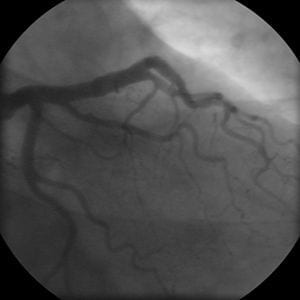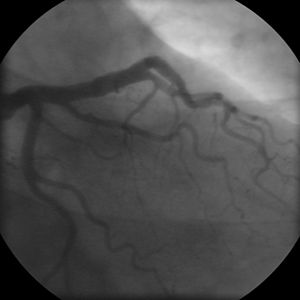Preliminary research could open the door to ready-to-use bioengineered veins
Small-scale animal studies suggest that surgeons might one day be able to simply open the refrigerator when the need for patient-ready bioengineered blood vessels presents itself.
Patients with coronary artery disease or peripheral arterial disease are often treated with bypass surgeries — in which the blood vessel that has narrowed as a consequence of the illness is closed off and circumvented by the implantation of an unrestricted ‘conduit’. To avoid complications, surgeons prefer to use vessels taken from a patient’s own body — harvesting a portion of vein from the leg, for example. But alternatives are often necessary for patients who have had to go under the knife many times, or who merely lack enough robust blood vessels.
Current alternatives have different limitations. Synthetic blood vessels made from polytetrafluorethylene only last for a median time of about 10 months before their flow is reduced as a result of complications such as infection or clotting. Meanwhile, the risk of hardening, clotting and aneurysm has limited the use of grafts taken from human cadavers.
One particularly promising option has been the development of tissue-engineered vascular grafts, which are made using a patient’s own cells — limiting the likelihood of rejection. However, these types of patient-specific grafts take up to 9 months to grow and can cost more than $15,000 per vessel.
Now Shannon Dahl, co-founder of biotechnology firm Humacyte in Durham, North Carolina, and her collaborators have developed a way to grow ‘bioengineered veins’ from donor cells by introducing the cells into scaffolds made of polyglycolic acid. Once these vascular grafts have grown in a bioreactor, the team strips them of cellular material using specialized detergents, leaving collagen tubes that are non-immunogenic — that is, unlikely to be rejected by patients’ immune systems. Using this method, the researchers say that instead of making one vascular graft at a time with one patient’s cells, they could use cell banks to make as many as 37 large or 74 smaller blood vessels per donor, and cell banks put together from multiple donors could hold even more.
The Latest on: Bioengineered veins
[google_news title=”” keyword=”bioengineered veins” num_posts=”10″ blurb_length=”0″ show_thumb=”left”]
via Google News
The Latest on: Bioengineered veins
- This $119 houseplant is bioengineered to remove harmful air pollution in your home.on April 30, 2024 at 2:41 pm
This week, the France-based biotech company Neoplants released the first houseplant bioengineered to remove harmful chemicals from indoor air. It targets volatile organic compounds (VOCs), which ...
- This $119 houseplant is bioengineered to remove harmful air pollution in your home.on April 30, 2024 at 2:14 pm
This week, the France-based biotech company Neoplants released the first houseplant bioengineered to remove harmful chemicals from indoor air. It targets volatile organic compounds (VOCs), which are ...
- Top 8 Best Natural Supplements for Varicose Veins in 2024on April 29, 2024 at 5:00 pm
Varicose veins is a common problem that significantly impacts many people, particularly women. These enlarged, distorted veins can be unsightly and cause unease, giving rise to symptoms including ...
- This Bioengineered Plant System Uses Microbiomes to Clean Air 30 Times Fasteron April 29, 2024 at 6:58 am
The Queen Marble Pothos is known to purify air better than other houseplants, but this supercharged version removes benzene, xylene and other harmful toxins at an even higher clip. David lives in ...
- Researchers: Possible key step made in bioengineered transplantationon April 28, 2024 at 10:18 pm
Researchers in Japan say they have confirmed blood flow in bioengineered lungs transplanted into mice. They say the lungs were made using human cells.
- A mix-up over bioengineered tomato seeds sparked fears about spread of GMO cropson April 28, 2024 at 4:15 am
Pumplin wouldn't say definitively either, but their website says this: "We are told that laboratory testing determined that it is, in fact, bioengineered (GMO). This result supports the fact that the ...
- A mix-up over bioengineered tomato seeds sparked fears about spread of GMO cropson April 27, 2024 at 11:01 pm
Pumplin wouldn't say definitively either, but their website says this: "We are told that laboratory testing determined that it is, in fact, bioengineered (GMO). This result supports the fact that ...
- Top 6 Best Vein Support Supplements in 2024on April 24, 2024 at 5:00 pm
Maintaining the health of our veins is vital for our general well-being, though it’s frequently ignored. Veins carry out an essential duty in transporting blood from diverse body parts back to ...
- This company just bioengineered a plant-bacteria combo to clean air better than an air purifieron April 23, 2024 at 5:00 pm
The secret is not so much the plant as it is a symbiotic relationship between Neoplants' bioengineered bacterium and the leafy pothos. Every month, the plant gets a dose of Power Drops ...
via Bing News










